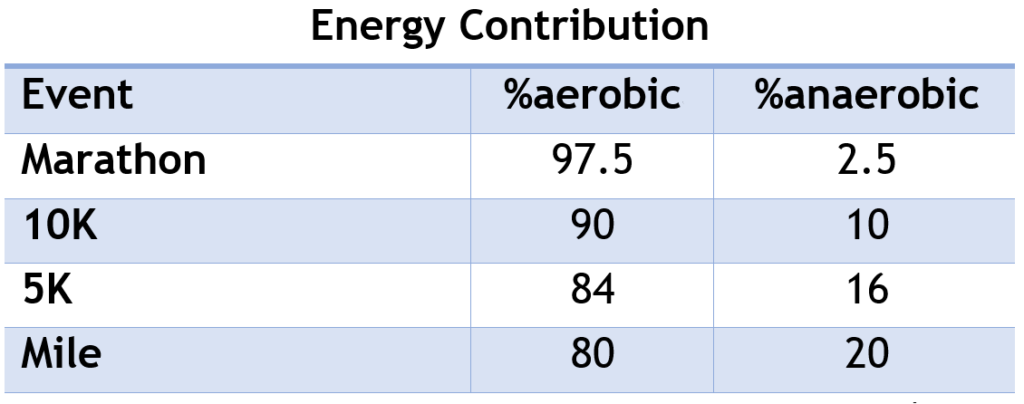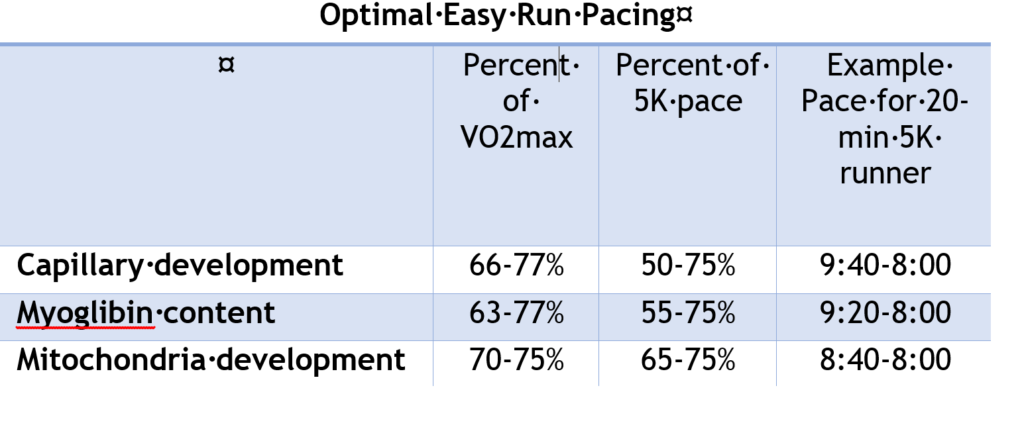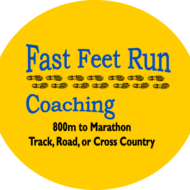
How Fast Should Your Easy Runs Be?
A common question asked by runners is “How Fast Should Your Easy Runs Be?” One of the more difficult concepts of training to comprehend is, “how do easy runs help me race faster”. If you want to run a marathon at 9 minutes-per-mile, how does any running at 10:30 pace help you? Wouldn’t running all your miles as close to goal-pace as possible make more sense? You would think, but no.
Logically, it would make sense that pushing your easy run pace as close to race pace as possible would help you get fitter quicker and ultimately run faster. You might think that the harder you work the better you get, right? Yet, most good coaches will tell you to run slow on your easy days and your easy running cadence should be the same as your other runs.
It is generally thought that more than 50% of your miles should be easy, especially your long run. The aerobic system, and thus aerobic development, is the one true secret to training and it’s the key to unlocking your potential.
Why Do I Need to Run Easy?
The first step to understanding just how important the aerobic system is to distance running is to identify the percentage of energy contribution the aerobic system provides for races 5k and longer. Even for a “short” event like the mile, over 80% of the energy required to run the race is produced via aerobic metabolism.

What is the aerobic system and how does developing it help you run faster (if you’re always running so slow all the time)?
What is the Aerobic System?
The aerobic system can use carbohydrates, fats, or proteins to produce energy. Energy production is slower, but more efficient than the other two systems. As you can tell by the name, the aerobic system requires that there be adequate oxygen available to the working muscles. Therefore this system is used more heavily during low-intensity activity, but actually, even a 5k mostly uses the aerobic system.
One key highlight of aerobic metabolism is the ability to burn fat as fuel. Our bodies have a seemingly unlimited capacity for storing fat and fat provides over twice as much energy per gram than protein or carbohydrate, making it a very attractive choice for energy production. In prolonged activities where intensity is low, the body will use fat as a main energy source and spare the use of muscle glycogen and blood glucose so that it is available for use if exercise intensity increases and oxygen availability is decreased. Keep in mind that aerobic metabolism doesn’t use one substrate exclusively. Although you may be burning mostly fat, a steady supply of carbohydrate is still necessary for the breakdown of fat into an energy source. Improving your capacity to transport and efficiently utilize available oxygen to produce energy will enable you to race faster.
The aerobic system makes up 85-99% of the energy needed to race. Running easy is aerobic development thus there is no better way to train the aerobic system. Next we examine the specific physiological adaptions that occur when you develop the aerobic system.
Capillary development
Capillaries are the smallest of the body’s blood vessels and they help deliver oxygen and nutrients to the muscle tissues while shuttling waste products out. The greater the number of capillaries you have surrounding each muscle fiber, the faster you can transport oxygen and carbohydrate into your muscles. Aerobic training (easy running) increases the number of capillaries per muscle fiber.
How does this help you run faster? This improves how efficiently you can deliver oxygen and fuel to your working muscles and how quickly they can clear waste products.
Increase myoglobin content of muscle fibers
Myoglobin is a special protein in your muscles that binds the oxygen that enters the muscle fiber. When oxygen becomes limited during exercise, myoglobin releases the oxygen to the mitochondria to produce more energy.
How does this help me race faster? The more myoglobin you have in your muscle fibers, the more oxygen you can sequester to the muscle under aerobic duress – like during a race. Aerobic training increases the myoglobin content of your muscle fibers.
Mitochondria development
Mitochondria are microscopic organelle found in your muscles cells that contribute to the production of ATP (energy). In the presence of oxygen, mitochondria breakdown carbohydrate, fat, and protein into usable energy. The more mitochondria you have, and the greater their density, the more energy you can generate during exercise, which will enable you to run faster and longer. Aerobic training increases both the number and the size of the mitochondria in your muscle fibers. There are a few other physiological benefits to aerobic training, but that discussion gets a little too scientific and likely only interesting to biology majors.
How does this help me race faster? Aerobic development is the single most important factor to long-term development. Sure strength development, VO2max sessions, and tempo runs will increase your fitness and are still important to racing faster. Before you can apply those to your training, you must have the endurance to complete the workouts.
Why Doesn’t Running Faster on Easy Days Make Me Get Faster in Races?
Running faster on some of your workouts will make you faster, but only in the right proportions and paces. Running faster too much or at the wrong paces will result in diminished aerobic development, but it increases the chances of injury and overtraining. This is the single biggest mistake runners of all experience levels make in their training.
Let’s look at why:
What is the best easy run pace for me?
How the aerobic system responds and adapts to certain training paces has been determined scientifically. Physiologically, we know:
- Capillary development appears to peak at between 60 and 75 percent of 5k pace.
- Research has shown that maximum stimulation of myoglobin in Type I muscle fiber occurs at about 63-77 % of VO2max. 63-77 % of VO2max is about 55-75 % of 5k pace.
Two researchers, Holloszy (1967) and Dudley (1982) published some of the defining research on optimal distance and pace for mitochondrial development. Holloszy found that maximum mitochondrial development when running at 50-75 % of V02max. Likewise, Dudley found that the best strategy for slow-twitch, mitochondria enhancement was running for 90 minutes per outing at 70 to 75 % V02 max. To summarize

In summary, your optimal easy run pace for aerobic development is between 55 and 75 % of your 5k pace, with the average pace being about 65 %. Running faster than 75% of your 5k pace on your long run doesn’t provide a lot of additional physiological benefit. And, you will be less fatigued. That might allow you to complete your next hard workout better and perhaps to run more miles.
Even though50-55 % of 5k pace will seem too easy, the research clearly demonstrates that it still provides near optimal physiological aerobic adaptation.
Why can I not run faster on my easy days if I feel good?
The faster you run on your easy days, the more stress you place on the muscles, tendons, ligaments in bones. For example, you may be able to head out the door and hammer out an easy day and feel fine with your breathing, but your hips might not be strong enough yet to handle the pace or the consecutive days of faster running and, as a result, your IT band becomes inflamed.
In addition to aerobic development, easy days can function as active recovery from your hard workouts – but not if you run them too fast. After a hard workout, your muscles will have micro-tears from the forceful contractions which happen at fast speeds. These micro-tears cause muscle soreness, and make training the day after a hard workout difficult. The body heals these small micro-tears through the circulatory system, which delivers the oxygen and nutrients to the muscles that need repair. Easy running delivers oxygen and nutrients directly to the muscles used during running. When running easy enough, the stress and micro tears that result from running are virtually non-existent, so the recovery outweighs the slight muscle damage.
There is time to run faster and a time to run slow. Work with your coach to learn when you should take it easy and when you should work harder. The goal of training is to build overall strength and speed, not to have one fast workout and then struggle with an injury.


